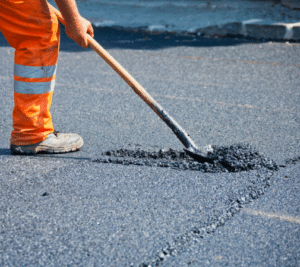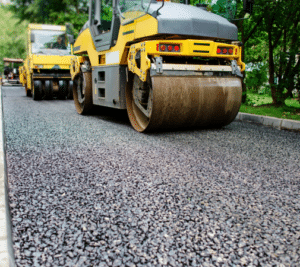Cement is one of the main ingredients used to make concrete, and concrete is used in virtually all types of buildings. Water, sand, gravel, and cement are the key ingredients to create concrete, and the cement used is vital to the mixture. All components are mixed to form a paste that will harden into concrete. Cement is needed for the mixture because it helps it bind together to harden and create a strong building material.
How is cement made?
There are several steps to making concrete that run from the original extraction of the raw materials through manufacturing and finally to it being packed and shipped.
Extracting the Raw Materials
What is cement made of? The materials are quarried in most cases so that the materials can be gathered. These materials can include various shales, slates, and limestones. There may also be a need to blast to get the materials free from the earth. When softer rocks are gathered, such as clay and chalk, they can be dug up by an excavator.
Several different ingredients go into creating cement. These include mill scale, limestone, clay, sand, fly ash, and bauxite. When rocks are quarried, they need to be broken up into much smaller pieces, about 6″ in size. Then there are crushers that reduce these pieces to about 3″ in size. Once the pieces are there, pyroprocessing is used to change them significantly.
Blending, Grinding, and Proportioning
After the ingredients that have been made ready for cement-making are mixed with several other components, they are all ground together and blended so that the mixture is fine and highly homogenous. The cement composition is then proportioned so that it has precisely the correct ratios of its ingredients, depending on the grade of the cement that’s intended. In general, about 20% of the mixture is clay, and about 80% of it is limestone.
This raw, ground mixture is then dried out so that it has less than 1% moisture. It is then blended with large, heavy rollers, and rotating tables combine the mix. Once the rollers have been used on it, it is a fine powder that can be put into silos for storage and later fed to a kiln.
Pre-Heating the Material
The raw materials that make up the cement are then put into a pre-heating chamber. This chamber has several cyclones. The kiln produces hot gases, and the cyclones use these to keep energy usage to a minimum. This makes the entire cement industry a more environmentally friendly one. As the materials pass through this chamber, they become oxides that can be put into the kiln. At the end of this stage, the mixture is a raw slurry fed into the kiln.
Using the Kiln
When the materials are put into the kiln, this is perhaps the most critical step in the process. The raw mix is placed inside, and it produces cement clinker. This clinker is the product of several chemical reactions between the compounds of silicon dioxide and calcium. If you’ve wondered what is cement made of, this clinker created in the kiln is the main ingredient.
The kiln will first evaporate the free water that’s inside the mixture. Several materials inside it go through chemical reactions and change into different forms. The clinker nodules then start to take shape. The temperatures inside the kiln go through stages that create various chemical reactions. Four different temperature stages lead to the clinker being formed. It is then in nodules about the size of a marble when removed from the kiln.
Cooling and Grinding the Clinker
Once the clinker is removed from the kiln, it is cooled down rapidly. Air is passed over it to cool it significantly in little time. During this vital state, some additives are added to the clinker so that they will be present when the clinker is ground down. One of these additives is gypsum. This ingredient added an essential property to the cement: compressive strength. Other additives are also used at this time, which may vary with the manufacturer. These can include Triethanolamine, oleic acid, ethylene glycol, and others.
There is then a final stage of grinding. Cement plants have rotating drums with steel balls to grind the clinker. As soon as the clinker has cooled, it is sent to those drums and is ground into tiny pieces that create a fine powder. A single pound of it will have 150 billion individual grains in it. Once this has been done, the cement is finished and ready to be used, but it still has to be packed and shipped out.
Packaging and Shipping
Once the cement has finished at the grinding mill, it is put into large silos. From there, it can be packed into bags of different sizes. It’s often packed in bags that are 20 to 40 kg. A small amount of it will be packed into small quantities for customers who want to use it in small projects. Most of it, however, is shipped out in bulk. It is often shipped out in bulk containers so that it can be shipped for large projects. This can happen by train, truck, or ship. Once it has been received on the other end, it is generally used as one of the main ingredients in concrete.
There are a lot of steps that cement mills put the materials through to create the finished product. Each stage is important to making the eventual fine powder with many beneficial properties. Good quality cement is essential for the construction industry. It gives concrete some of its strength for more durable construction projects.



